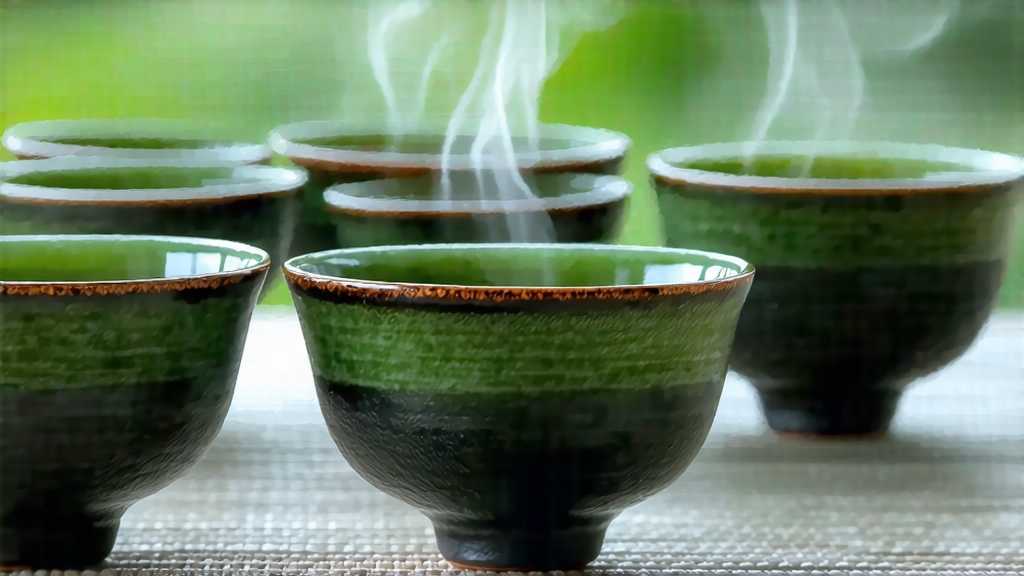
When most tea lovers outside China hear “oolong,” they picture a curly, jade-green pellet that unfurls like a tiny accordion in hot water, releasing orchid-like perfume and a honeyed, lasting finish. That tea is Tieguanyin, literally “Iron Goddess of Mercy,” and it is the most travelled ambassador of Chinese oolong culture. Yet the name on a café menu rarely hints at the centuries of craftsmanship, the micro-climates of Anxi County, or the quiet ritual that turns a handful of leaves into a multisensory conversation. This essay invites the international reader to walk the entire arc of Tieguanyin—from Song-dynasty legend to twenty-first-century sustainability—so that the next cup you meet, whether in a Tokyo tearoom or a Berlin food market, becomes a doorway rather than a label.
Origin stories in China are rarely simple, but the tale told in Anxi’s Pinghe village has remarkable consistency. In the late Yongzheng era (1723–1735), a poor farmer named Wei Yin found a rusted iron statue of Guanyin, the Bodhisattva of Compassion, abandoned in a grotto. He carried it home, cleaned it, and installed it in a small shrine. That night, Guanyin appeared in a dream and guided him to a hidden shrub behind his house whose leaves shimmered like iron yet smelled like jasmine. Wei cultivated the plant, named it after the goddess, and shared cuttings with neighbors. Within two generations, the cultivar had colonized the granite ridges of Anxi, and itinerant tea merchants were carrying it down the Min River to the port of Xiamen, where Dutch and British traders christened it “Tea of the Iron Bodhisattva.” Genetic mapping carried out at Fujian Agriculture and Forestry University in 2018 confirms that Tieguanyin is a distinct strain of Camellia sinensis var. sinensis, possessing an unusually high ratio of nerolidol to geraniol, the volatile compounds responsible for its signature floral lift.
Anxi County, a two-hour drive inland from Xiamen, is a crumpled landscape of subtropical forest and tea gardens that sit between 500 m and 1,200 m elevation. The soil is lateritic granite, porous and mineral-rich, drained by mountain streams that keep humidity hovering around 78 %. These conditions create the diurnal temperature swing—often 10 °C between dawn and midday—that slows leaf growth and concentrates amino acids. Within Anxi, micro-terroirs have given rise to two stylistic lineages: the traditional “Chuan Tong” Tieguanyin, oxidized 30–40 % and charcoal-baked, and the modern “Qing Xiang” (light aroma) version, oxidized only 15–20 % and minimally baked. A third, increasingly rare style, “Nong Xiang” (thick aroma), is oxidized above 45 % and baked over lychee-wood charcoal for up to 60 hours, yielding liquor the color of antique amber and a palate of roasted plantain, cacao, and incense.
Crafting Tieguanyin is a forty-hour choreography spread across three days. Picking begins at dawn when the leaf’s moisture is still tethered to the stem; only the top three leaves and the semi-open bud are plucked. The baskets are rushed to the withering court, a cement patio heated by the mountain sun to 32 °C. Here the leaves are “waved” every twenty minutes—gently tossed by hand to bruise the edges—initiating oxidation while the center remains green. After four hours, the leaf emits a ringing, almost metallic aroma that locals call qing xiang, the “green sound.” Next comes the critical fixation in a 230 °C drum for ninety seconds; enzymes are neutralized, locking in the desired oxidation level. Rolling follows, first mechanically to break cell walls, then by foot inside a square cotton cloth bag, twisting the leaf into the iconic pellet. The pellets are dried at 80 °C until moisture drops to 7 %, sorted by size, and finally baked. For traditional style, the bake is cyclic: 110 °C for two hours, rest for four, repeat up to five times. Between cycles the tea “sleeps,” allowing residual heat to migrate outward so the flavor polymerizes without scorching.
Western drinkers often brew Tieguanyin like a green tea—one teaspoon, mug, boiling water, three minutes—then complain of bitterness. The leaf is denser than it looks; a pellet weighs nearly twice a curled strip of Dragon Well. Gongfu